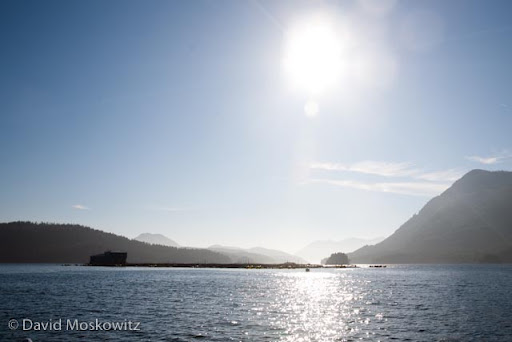This weekend was the 6th weekend of 9 for the year-long Wildlife Tracking Intensive I teach for Wilderness Awareness School. This month we spent Saturday searching for signs of large carnivores and other creatures in the dense rainforests of the Middle Fork of the Snoqualmie River on the western slope of the Cascades. Among other things we discovered the following tracks and signs:
- Feeeding and scent marking signs of black bears
- Scent marking signs of a mountain lion
- Beaver feeding and dam building activity
- Black-tailed deer and elk sign including antler rubs, trails, tracks, scats and feeding sign
Teaching assistant Dan Gusset and student Erin Campbell inspect the bite mark of a black bear found on a small tree along a game trail. Such marks are commonly produced by scent marking bears whom also claw and rub such trees in efforts to attach their scent to tree for other bears to find.
Douglas Cowan inspects a pika hay mound found under a bridge along the Snoqualmie River. Pika typically live at higher elevations in the Cascades but here were making use of the large boulders laid down at the base of the bridge which mimic higher elevation talus fields. Pika’s collect vegetation in mounds for later consumption in the rocks where they live.
Trever Ose examines some elk hair on an antler rub. Antler rubs are an important scent marking behavior of bull elk associated with the breeding season. After abraiding the bark of the tree with his antlers, the elk will then rub the tree with his face, shoulders and the base of his antlers to attach his scent to the tree. The scent acts as an advertisement to female elk in the area and a challenge to other males.
On Sunday we ventured out to the banks of the Puget Sound where students were quizzed on a wide variety of tracks and signs, including identifying and interpreting the story behind the remains of numerous species of birds we discovered. Tracks and signs we found included:
- Tracks of: racoon, river otter, feral house cat, mink, muskrat, opossum, black rat, deer mouse, shrew, American robin, sparrow, black-crowned night heron, teal.
- River otter scent marking sign
- Pellets from several species of owls containing vole remains
- Northern harrier pellets
- The remains of a barn owl, a short-eared owl, several snow geese, a female pheasant, and several species of ducks most of which appeared to have been predated by areal predators.
On Sunday, besides tracks and signs, the birding was quite good. We observed four snowy owls, a short-eared owl, numerous Northern harriers and other hawks, dunlin, yellow-legs, pintails, widgeons, western meadowlarks, snow geese, trumpeter swans, and many other species.
Front (below) and hind tracks of a muskrat in fine river mud.
All four feet (two fronts at bottom of the frame, hinds above) of a river otter.
The wings of a snow goose which had likely been consumed by a bald eagle on the banks of the Puget Sound.
Identifying bird feathers found in the field at the end of the day.
Feathers from a barn owl (left) and short-eared owl, both found on the edge of a large field filled with vole sign where each owl had likely been hunting when they were killed. The short-eared owl remains where found scattered in the brush bellow some trees in a location where a larger bird, such as a great-horned owl or bald eagle might perch to consume a meal. The barn owl feathers where found below another tree on the ground and was also likely consumed by a raptor.
The class under a particularly large Sitka spruce on the bank of the Middle Fork of the Snoqualmie River. The large amount of reddish debris at the base of the tree is the result of a feeding Douglas squirrel. Such a midden is created when the squirrel consumes conifer cones from a favored perch and discards the remains onto the forest floor below the perch.





































